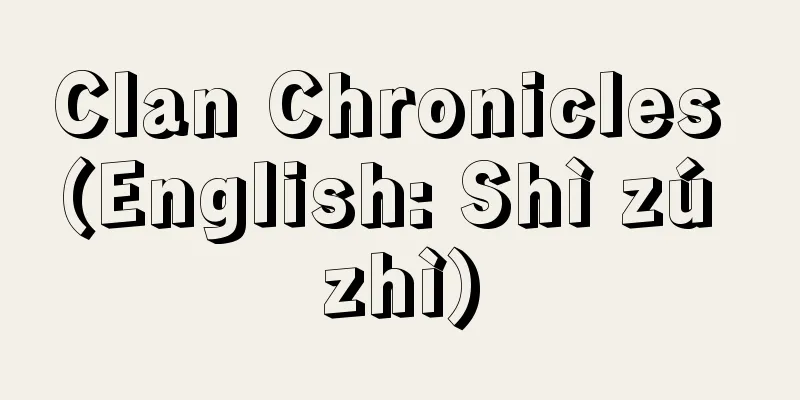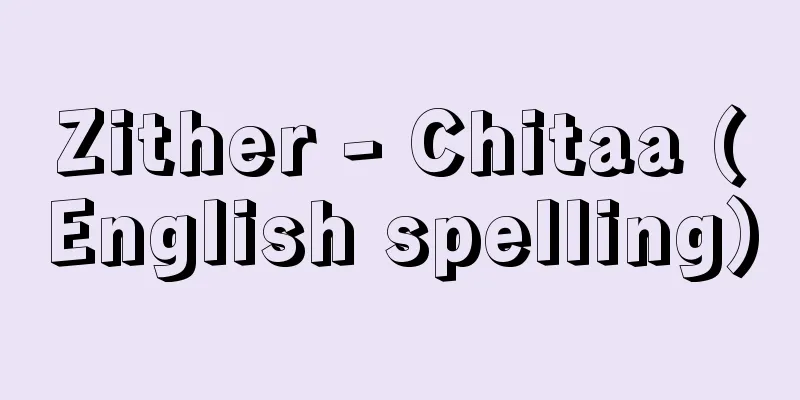Oyoroi - Great Armor

|
This is a type of Japanese armor, and was used mainly by horse-mounted warriors from the Heian period through the Northern and Southern Courts period, when mounted archery battles were popular. The armor worn by warriors, which emerged in the mid-Heian period, is thought to have inherited the style of tanko (short armor) and keiko (shoulder armor) that were made by the government during the Nara period, but in the early days, they used privately made armor, which is described in the diary of aristocrats as "tegoi" (sewn cowhide). Eventually, the private power of the samurai was used by the state to quell rebellions in border areas and maintain public order, and as they became agents of public power and grew in power, the samurai absorbed the aristocratic culture of the dynasty, and based on their experience in battle, they improved the function, structure, and shape of the armor, refined its appearance, and it is thought that by the late Heian period, the style known as o-yoroi, as seen today, was established. The design of the metal fittings, the patterns of the painted leather, the colors of the dignified fur, etc., reflect the emotional and elegant aesthetic sense of the nobility, and in addition to its excellent functionality as armor for horseback archery, it has a dignified and magnificent appearance. Because of its majestic impression, it was praised as "O-yoroi" (large armor) in contrast to the lighter Domaru and Haramaki armors used for foot battles, and the general's clothing was also honored with the honorific Onki Senaga (long sleeved armor). It became the standard for Japanese armor from the Middle Ages onwards, and from around the Muromachi period it came to be called Shiki Yoroi (formal armor) or Shikimasa no Yoroi (formal armor). The distinctive feature of O-yoroi is that it is armor for horseback archery, which is composed of three parts: helmet, torso, and sleeves, and is generally made of small metal plates. The torso has four sections (also called kabuki-do) that are connected to the front, left, and back, and has a standing pole on the front and back. The front standing pole is two sections, and the back standing pole is three sections, even with the reverse board. The grass skirt that covers the waist to the thighs is divided into four sections, front, back, left, and right, and five sections are normal, but some early armors have four sections from front to back. The right side of the torso is left wide open as a pull-in, and in the gap is a side shield made of a tsuboita board with a 1-ken kusuri attached using a bat attachment. A piece of painted leather is stretched from the front to the left side, called tsurubashiri, to improve the movement of the bowstring when shooting. The upper part of the back torso is called oshitsuke, and from here the watagami that rests on the shoulders is extended, and above this is a shoji no ita (paper screen) board that protects the neck, and to close the gap at the chest and side, a sandalwood board is hung on the right and a dovetail board is hung on the left. The reversed version of the San-no-ita has the opposite intimidating effect to the san-no-ita, allowing for the ease of putting on and taking off, and bending and stretching. The ring for the Daiza is attached to the center, and the Agemaki is tied to it, with the Kakeo and Mizunomi straps attached. The helmet has a bowl with stars embossed on it for reinforcement and decoration, and four or five star helmets covering the neck, but from around the Northern and Southern Courts period, a sujikabuto with a cap was added. The sleeves are large sleeves with a crown plate and six tiers of Saneita in the early period, and seven tiers from the late Kamakura period, and the sleeve straps, such as the Shika-o, Uke-o, and Kake-o, are tied to the Gumi sleeves on the shoulders. O-yoroi armor from the Heian period has been handed down at Sanage Shrine in Aichi Prefecture, Itsukushima Shrine in Hiroshima Prefecture, the Akagi family residence in Okayama Prefecture, and Mitake Shrine in Tokyo, while o-yoroi armor from the Kamakura to Muromachi periods remains at Oyamazumi Shrine in Ehime Prefecture, Kasuga Taisha Shrine in Nara City, Kushibiki Hachiman Shrine in Aomori Prefecture, and Hofu Tenmangu Shrine in Yamaguchi Prefecture. After the Nanboku-cho period, o-yoroi lost its practicality due to changes in weapons and fighting methods. As a result, it was decorated and turned into a formal accessory, and was forced to decline, but as a result of the restorationism that arose in the mid-Edo period and a renewed appreciation of medieval armor, it began to be produced again. This is the so-called restoration-style o-yoroi. However, immature research and a lack of historical investigation could not be helped, and reflecting the peaceful state of the world, functionality was not taken into consideration, and it was unnecessarily extravagant and degraded in dignity, making it far from being practical, and in terms of craftsmanship it could not compare to medieval o-yoroi. [Motoo Yamagishi] [Reference] |©Tatsuo Ikeda "> Names of each part of O-yoroi © Hiroki Sato "> Main types of intimidation Source: Shogakukan Encyclopedia Nipponica About Encyclopedia Nipponica Information | Legend |
|
日本甲冑(かっちゅう)の一形式で、おもに騎射戦の盛んな平安時代から南北朝時代にかけてもっぱら騎馬の武士に用いられた。平安中期ころ勃興(ぼっこう)した武士の甲冑は、はじめは奈良時代の官製の甲冑である短甲(たんこう)、挂甲(けいこう)などの形式を継承したものと推定されるが、初期には公家(くげ)日記などに「綴牛皮(てごい)」と記されている私製の甲冑を用いた。やがて武士の私的勢力が、辺境の地の乱の鎮定や治安の維持を担うなど国家に利用され、公権力の代行者となってその勢力を興隆させると、武士は王朝の貴族文化を摂取し、戦闘の経験を踏まえて甲冑の機能、構造、造形などの改良を行い、外観を整え、平安後期には今日みるような大鎧と称される様式を成立したものと考えられる。金物(かなもの)の意匠、画韋(えがわ)の文様、威毛(おどしげ)の色彩感などに情緒的で優美な貴族の美意識が反映され、騎射戦用の甲冑としての優れた機能性にあわせて、気品高く壮麗な外観をなしている。その雄偉な印象から徒歩戦用の軽便な胴丸(どうまる)、腹巻(はらまき)などに対し、大鎧と美称され、また将帥の着料は御着背長(おんきせなが)とも尊称され、中世以降の日本甲冑の規範となり、室町時代ごろから式の鎧、式正の鎧などとよばれるようになった。 大鎧の特色は、小札(こざね)製毛引威(けびきおどし)を原則とし、兜(かぶと)、胴(どう)、袖(そで)の3部分をもって一領を構成する騎射戦用の甲冑である。胴は前、左、後ろへと一続きになる4段の長側(ながかわ)(衡胴(かぶきどう)ともいう)の前後に立挙(たてあげ)がつく。前立挙は2段、後(うしろ)立挙は逆板(さかいた)とも3段で、腰から大腿部(だいたいぶ)を覆う草摺(くさずり)は前後左右の4間に分割し、5段を普通とするが、初期の鎧には前後を4段にしたものもある。胴の右側を引合(ひきあわせ)として広くあけ、そのすきまには壺板(つぼいた)に草摺1間を蝙蝠付(こうもりづけ)を用いて取り付けた脇楯(わいだて)を当てる。正面から左脇(わき)に画韋を張り弦走(つるばしり)とよぶのは、弓射のときに弓弦の走りをよくする配慮である。後胴の上部を押付(おしつけ)といい、ここから肩にかかる肩上(わたがみ)を出し、この上に頸部(けいぶ)を守る障子板(しょうじのいた)を設け、胸脇に生ずるすきまをふさぐため右に栴檀板(せんだんのいた)、左に鳩尾板(きゅうびのいた)を垂下する。逆板は着脱と屈伸の便を考慮して三の板との威付けを逆にしたもので、中央に大座(だいざ)の鐶(かん)を打ち総角(あげまき)を結び、袖の懸緒(かけお)と水呑(みずのみ)の緒(お)を控える。兜は補強と装飾を兼ねる星を打った鉢に、頸廻りを覆う四枚、五枚(じころ)の星兜を具したが、南北朝時代ごろより笠付きの筋兜(すじかぶと)を添えるようになった。袖は冠板(かんむりいた)に、初期には6段、鎌倉後期ごろからは7段の札板(さねいた)を取り付けた大袖(おおそで)で、執加緒(しかのお)・受緒(うけお)・懸緒などの袖の緒をもって肩上の袖付の茱萸(ぐみ)に結び付けた。 平安時代の大鎧は、愛知県猿投(さなげ)神社、広島県厳島(いつくしま)神社、岡山県赤木家、東京都御嶽(みたけ)神社などに伝わり、鎌倉時代から室町時代の大鎧は、愛媛県大山祇(おおやまづみ)神社、奈良市春日(かすが)大社、青森県櫛引八幡宮(くしびきはちまんぐう)、山口県防府(ほうふ)天満宮などに残る。 南北朝時代以降、大鎧は武器や戦闘法の変化に伴い実用性を失った。そのため加飾されて威儀の装具と化し衰退を余儀なくされたが、江戸中期におこった復古主義と中世甲冑の再認識の結果、ふたたび製作されるに至った。これがいわゆる復古調の大鎧である。しかし、研究の未熟と考証の不足はいかんともしがたく、泰平の世情を反映して機能性を考慮せず、いたずらに華美に流れて品位を落とすなど実用にはほど遠く、工芸的にも中世の大鎧には及ぶべくもなかった。 [山岸素夫] [参照項目] |©池田達夫"> 大鎧の各部名称 ©佐藤廣喜"> 威のおもな種類 出典 小学館 日本大百科全書(ニッポニカ)日本大百科全書(ニッポニカ)について 情報 | 凡例 |
<<: Giant Armored Lizard - Giant Armored Lizard
>>: Artemisia major - Artemisia major
Recommend
Çukurova (English spelling)
Cilicia is a plain formed by the delta of the Seyh...
Palaistra
…In Greece, where physical education was consider...
Juneau (English spelling)
The capital of the U.S. state of Alaska. It is loc...
Springhare (leap rabbit) - Springhare (English spelling)
A rodent mammal of the family Leporidae with well-...
frame
…A heated facility for raising seedlings made of ...
Derris malaccensis (English spelling) Derrismalaccensis
… [Mitsuru Hotta]... *Some of the terminology tha...
slow-pitch softball
...In addition, female catchers are required to w...
Frustration tolerance
...Furthermore, S. Rosenzweig classified reaction...
Meat - meat
...Then there are the masks, which have been used...
Al-Maqrizī, Abū al-`Abbās Aḥmad ibn `Alī Taqī al-Dīn
[Born] 1364. Cairo Died: February 9, 1442. Arab hi...
Kisegawa
This river collects spring water from around Gote...
o-Hydroxybenzoic acid - Oruto Hidorokishi Ansakousan
…It is an aromatic organic acid. It is an o -hydr...
RPGN
rapidly progressive glomerulonephritis Source : In...
Eusebios (of Caesarea)
A Christian author known as the "Father of Ch...
Religious Wars
...Armed conflict between Catholics and Protestan...









